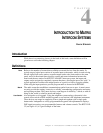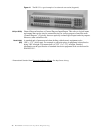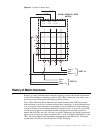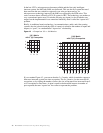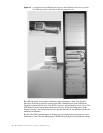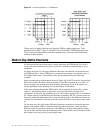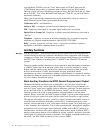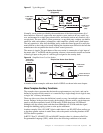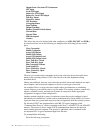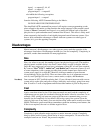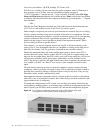
Chapter 4 - Introduction to Matrix Intercom Systems 53
Special Considerations
When considering the type of intercom system to install for a given application, there are
many factors to take into account and many of these have been discussed in an earlier
chapter. These factors are discussed in detail in the following section on advantages and
disadvantages of matrix intercom systems versus the other types of systems available.
Advantages
Matrix intercom systems have numerous advantages over other types of intercoms. These
advantages include size, configurability, variety of communication types supported, and
ancillary functions available. The following discussion will refer to the RTS™ ADAM™
Intercom System, but a number of the principles may apply to other matrix intercom
products.
Size
In this context, size refers to the number of user stations supported. The RTS™ ADAM™
line of intercoms is available in sizes from eight users up to 1,000+ in a single matrix, and
can be expanded by means of trunking to include 31 such matrices interconnected. A
typical hardwire PL system is no more than four channels – although most modern PL
systems can be expanded to a dozen or more, the economics and ergonomics quickly
become less desirable with size.
Configurability
In a matrix intercom system, the hardware is typically installed once and not altered day-
to-day to accommodate day-to-day operational needs. Since each user station has the
electrical capability to be connected to any other user station (via the crosspoints or
individual crosspoint adjustments), changing who talks to whom, rules for what happens
under certain circumstances, and the assignments of keys are under software control. In
matrix intercoms this configuration can be done in many ways. There is usually a
computer connected to a port of the matrix with software that allows changes to be
entered, activated, and saved. Additionally, changes the users are allowed to make on their
panels can be used to configure the system.
The flexibility to make these changes and more without the need for labor intensive wiring
changes are a key advantage of matrix intercom systems. It allows a single system to
function as three independent intercoms for three studios most of the year and as a single
large system during election coverage by the simple act of loading a new file.
Types of Communications Supported
A modern matrix intercom system has the ability to allow any of the user stations to be
connected to any of the other stations. Since the connections are under software control,
virtually any communications configuration can be accomplished, and as such, there are
very few limitations on type of communications supported, without the need for
specialized hardware.
A great deal of the capabilities of modern matrix intercom systems is in the ease of which
they allow different types of communications to be established. For example, from your
home telephone you can establish a four-way conference call. It may involve calls to the
operator, or conferencing in two people, one of whom then conferences in a third, but it
can be done. At the office, it may be a bit easier. Call Alice, press the “CONF” button on



